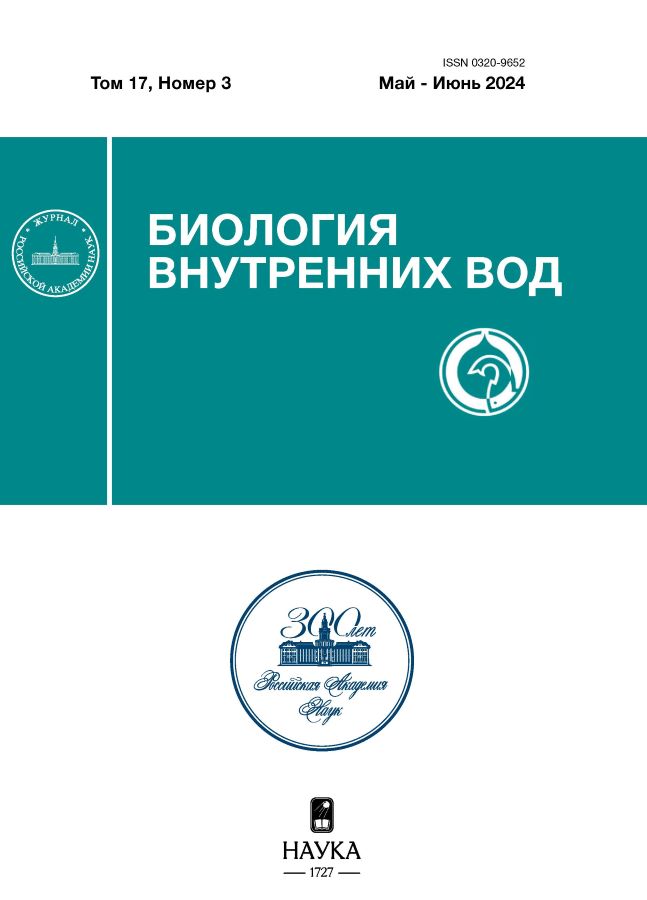Distribution of Najadaceae Species in Trans-Baikal Area Due to Climatic Factors
- Authors: Bazarova B.B.1, Chemeris E.V.2, Bobrov А.А.2,3
-
Affiliations:
- Institute of Natural Resources, Ecology and Cryology, Siberian Branch, Russian Academy of Sciences
- Papanin Institute for Biology of Inland Waters, Russian Academy of Sciences
- Tyumen State University, AquaBioSafe
- Issue: Vol 17, No 3 (2024)
- Pages: 381-391
- Section: ВОДНАЯ ФЛОРА И ФАУНА
- URL: https://ruspoj.com/0320-9652/article/view/670105
- DOI: https://doi.org/10.31857/S0320965224030026
- EDN: https://elibrary.ru/ZQAEKN
- ID: 670105
Cite item
Abstract
According to data of the late 20th century in the Trans-Baikal and Baikal areas, the family Najadaceae is represented by four species known in few localities: Caulinia flexilis (4 localities), C. minor (3), and Najas major (3), N. marina (4). All of them are annuals, r-strategists, which are characterized by fluctuations in abundance. Since the 21st century, these species have been found in 20 more localities, mainly situated within the Baikal Depression. In 2015, when performing monitoring studies of aquatic flora, three more new localities of Caulinia flexilis, C. minor, and Najas major were found in the basin of the Amur River. Distribution maps of the Najadaceae species in the region were compiled, and the ecological characteristics of their habitats were given. In Trans-Baikal area, since the middle of the 20th century, warming has occurred due to an increase in the average annual temperature. For the last 70 years, aridization has increased in southern regions, which changes the habitat conditions in waterbodies. Findings of these Najadaceae species in Trans-Baikal area coincided with the periods of increase in mean annual air temperatures and with local minimums of precipitation. An increase in the number of findings of the Najadaceae species since the beginning of the 21st century, both in Trans-Baikal area and in other regions of Russia, has been occurring against the background of an increase in the average annual air temperature. In Trans-Baikal area, the trend of increasing of temperatures in the warm season since the beginning of the 21st century is favorable for these species and may contribute to their further distribution.
Full Text
About the authors
B. B. Bazarova
Institute of Natural Resources, Ecology and Cryology, Siberian Branch, Russian Academy of Sciences
Author for correspondence.
Email: balgit@mail.ru
Russian Federation, Chita
E. V. Chemeris
Papanin Institute for Biology of Inland Waters, Russian Academy of Sciences
Email: lsd@ibiw.yaroslavl.ru
Russian Federation, Borok, Nekouzskii raion, Yaroslavl oblast
А. А. Bobrov
Papanin Institute for Biology of Inland Waters, Russian Academy of Sciences; Tyumen State University, AquaBioSafe
Email: lsd@ibiw.yaroslavl.ru
Russian Federation, Borok, Nekouzskii raion, Yaroslavl oblast; Tyumen
References
- Азовский М.Г., Чепинога В.В. 2007. Флора высших растений озера Байкал. Иркутск: Изд-во Иркутск. ун-та.
- Аненхонов О.А., Пыхалова Т.Д. 2010. Конспект флоры сосудистых растений Забайкальского национального парка. Улан-Удэ: Изд-во БНЦ.
- Беляков Е.А., Гарин Э.В., Охапкин А.Г., Лебедева О.А. 2015. Najas major All. на территории Нижегородской области // Междунар. журн. прикладных и фундаментальных исследований: биологические науки. № 12. С. 1826.
- Бирюкова О.В., Шестакова А.А., Беляков Е.А., Гарин Э.В. 2017. О распространении Caulinia minor (All.) Coss. et Germ. (Hydrocharitaceae, Liliopsida) на территории Нижегородской области // Поволжский экол. журн. № 3. С. 251. https://doi.org/10.18500/1684-7318-2017-3-251-259
- Варгот Е.В. 2015. О многолетней динамике некоторых водных растений в условиях Республики Мордовия // Гидроботаника–2015: Матер. VIII Всерос. конф. с междунар. участием по водным макрофитам. Ярославль: Филигрань. С. 78.
- Вахнина И.Л., Обязов В.А., Замана Л.В. 2018. Динамика увлажнения в степной зоне юго-восто
Supplementary files














